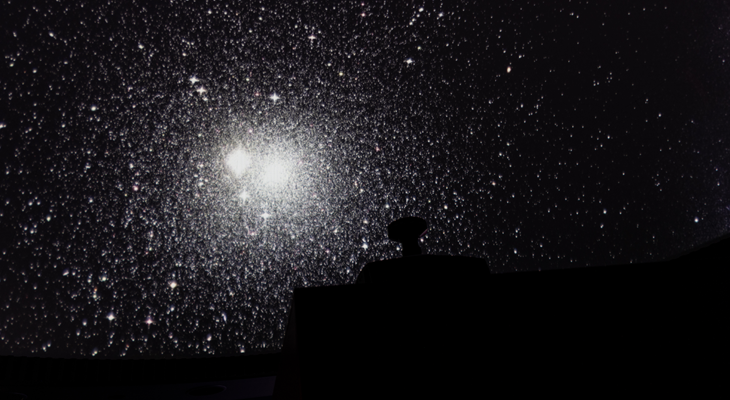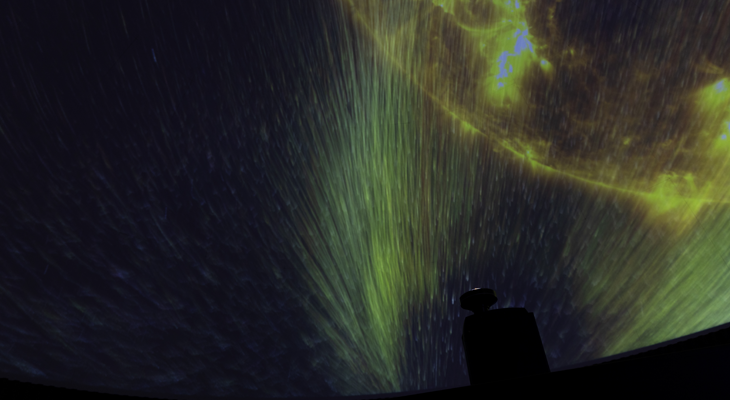
Planetarium Show: The Little Star That Could
Researchers with Joliet Junior College and the U.S. Geological Survey are encouraged by initial findings from their spring study analyzing fish feeding attractants.
In May, JJC Natural Science professor Dr. Patrick Mills teamed with the Illinois Department of Natural Resources and the USGS to deploy candy-like blocks into the Illinois River. The study, performed at Starved Rock State Park and three other locations, was aimed at identifying ways to control the invasive Asian carp.
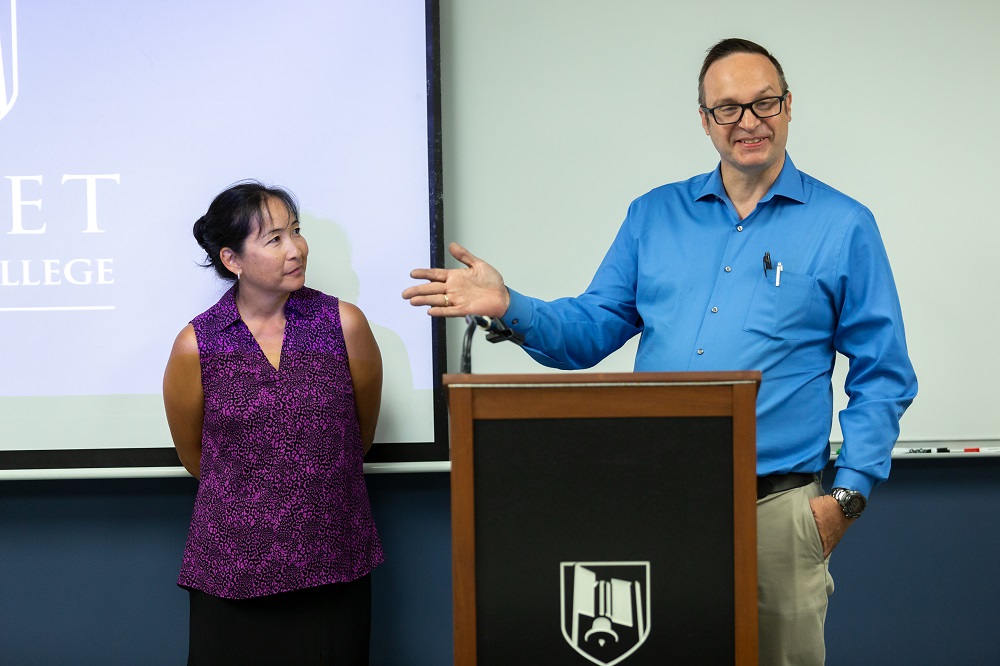
“I was pleasantly surprised,” Robin Calfee, a research biologist with the USGS Columbia Environmental Research Center, said during a visit to JJC Wednesday. “I was skeptical going in. Who would have thought pineapple or aniseed would serve as an attractant for fish?”
JJC worked with Alsip-based Taylors Candy to create the sugar blocks, which were flavored with either pineapple, aniseed, or garlic. Some 200 were added to commercial hoop nets, and the catches were compared to unbaited nets. According to Calfee, the pineapple-flavored blocks performed significantly higher than the other flavors.
“That’s why I’d like to go back and further investigate and I would like to test pineapple,” she said.
Calfee said a follow up study is necessary to produce an accurate statistical analysis, after which the results will be published.

According to Mills, there are tentative plans to conduct more studies this fall that would combine the flavored blocks with amino acids. Mills, whose research group includes professors Bradley Czerniak and Clinton Garwood, along with JJC students, have been focused in part on the use of amino acids as fish feeding stimulants. The laboratory work is being carried out on the JJC campus through Mills’ summer interdisciplinary course and undergraduate research this fall.
“Lab studies feature the introduction of test amino acid bends to tanks containing goldfish, with these fishes’ response to the amino acids recorded and later analyzed. These studies’ ultimate goal is to determine the optimal concentration of amino acids required to initiate a strong feeding response from cyprinoid species,” said Mills.
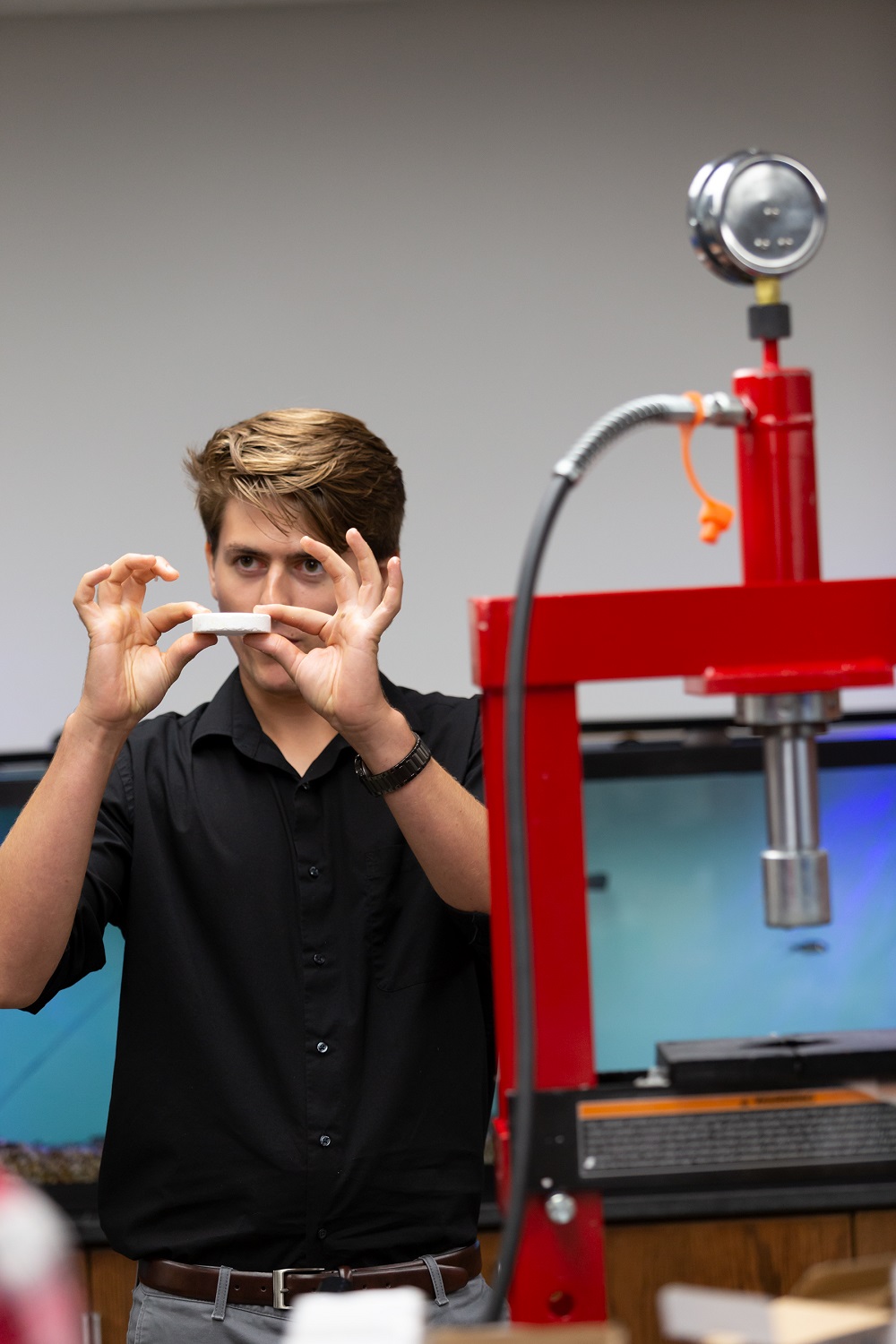
With the help of 3D printing inside JJC’s Maker Lab, students in Mills’ summer course are also preparing prototypes for the blocks’ dedicated dosing container.
“I’m so excited to have Patrick as a collaborator,” said Calfee. “If we can link up his amino acid complex to some flavors and figure out the behavioral response I think we might be on to something.”
JJC and the USGS are working to formalize their research collaboration through resources for faculty and internships to JJC students, who would have the opportunity to work at both the college and the agency’s research center in Missouri.
“It’s a benefit to both our center and to the students because the students are gaining experience while they’re still attending school and we’re getting help from them,” said Calfee. “So it’s a win-win situation for both of us.”
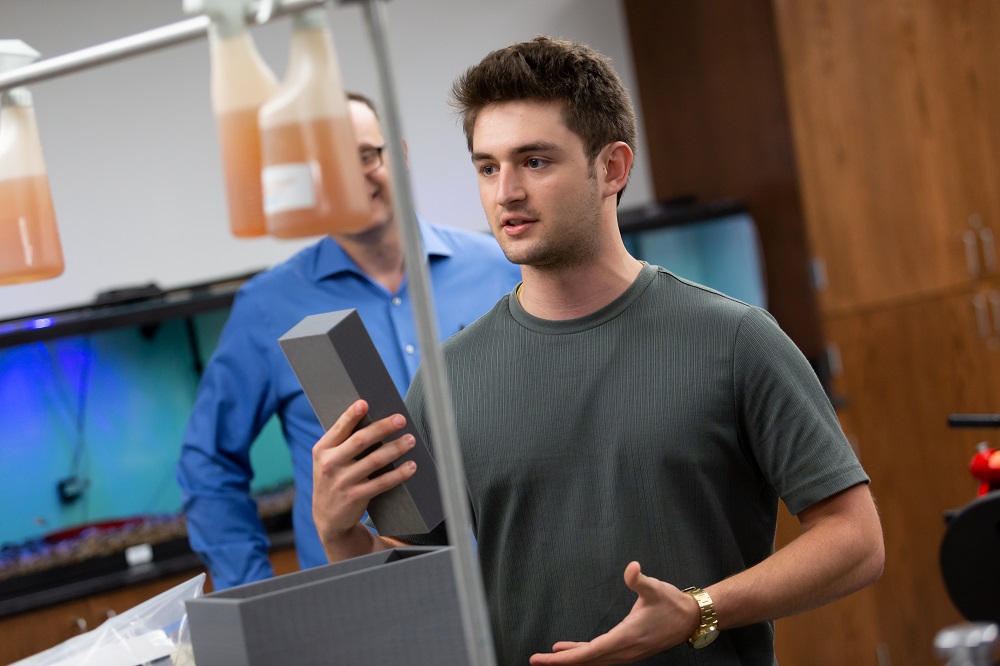
In addition, Mills’ group recently received a large grant to expand its research. The $25,000 gift came from the JJC Foundation, which each year awards faculty and staff for special projects or programs. According to Mills, these funds are being used to involve a variety of other JJC departments in the Asian carp project. This includes Computer Information and Office Systems, Technical, Agriculture and Horticulture Science, as well as the college’s Maker Lab. Mills said this adds valuable support in creating analysis software and designing amino acid encapsulation equipment.
“A cross-campus effort such as this is essential, as the design and implementation of inventions such as the attractant blocks relies on collaboration between entities with a diverse range of skills,” Mills said. “This is a situation ideally suited to the community college environment.”
For media inquiries, contact Communications and Media Coordinator Scott Harvey at 815-280-2844 or sharvey@jjc.edu.

